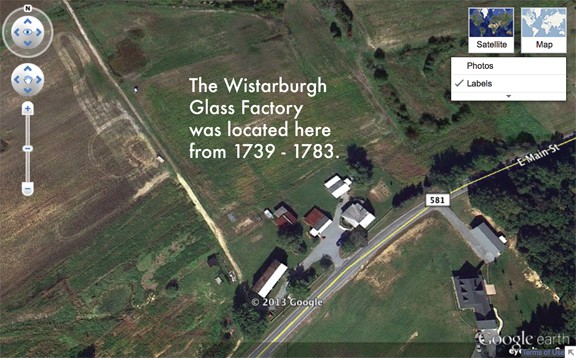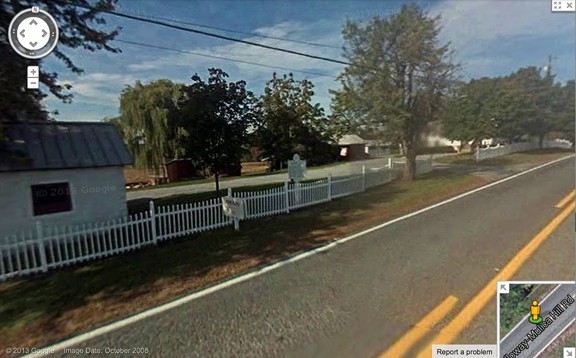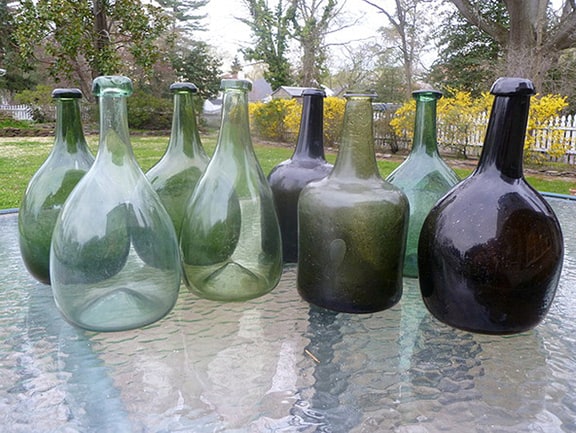 The United Glass Company located at Wistarburgh
The United Glass Company located at Wistarburgh
PART 1
by Stephen Atkinson
24 September 2013
In 1739, the United Glass Company, located at Wistarburgh, was America’s first successful glass factory and the first cooperative manufacturing business venture in the Colonies.
Tucked away on a top of a hill on Commissioners Pike in Salem County near the center of the small town of Alloway, New Jersey, is a working farm which once housed America’s oldest successful glass factory. Here in 1739, Caspar Wistar founded the United Glass Company. He first named the hamlet Glass House and then through the success of the factory, the site and town became known as Wistarburgh. Caspar was a brass button manufacturer in Philadelphia in the early 1730s along with being a very successful land owner in the State of Pennsylvania. The United Glass Company was the first manufacturing business of any kind on a large scale that was set up similar to modern day corporations such as General Motors.
I will begin with a little history about the Glass works Caspar founded. The forming of the joint venture between Caspar Wistar, the German immigrant living in Philadelphia, and four glass workers he contacted back in his home country of Germany in the Palitinate region of that country, was the first of its kind here in the early colonies. The four glass makers arrived in Philadelphia in the fall of 1738. The glass makers names were Johann Wilhelm Wentzel, Caspar Halter, Johann Martin Halter and Simeon Griessmeyer. Wistar set up the first of its kind, on the shores of the British colony, a glass works which was owned as a joint venture in its inception between five investors.
The company as a whole was simply called the United Glass Company but in reality it was three separate companies within a company, again, sort of like General Motors. Caspar Wistar was the principal owner in all three companies holding a 2/3 majority ownership as the major investor in each of them. The four glass makers were entitled to 1/3 of ownership and profit from their respective companies. The first company formed was between Caspar Wistar, the investor and Johann William Wentzel the glass artisan. The second company was owned by Caspar Wistar, the investor and Caspar Halter the artisan. The third company was a little different as once again Caspar is the investor but this time two men, Johann Martin Halter and Simeon Griesmeyer share the roles as artisans. In all three companies, Caspar Wistar and the artisans shared expenses, assets and profits. These arrangements survived until Wistar’s death in 1752 of Dropsy.
In the financial ledger Catherine Wistar kept after her fathers death, the glass works are simply called the Glass House when mentioned in the pages of this journal (see below) which is in my personal collection. When Wistarburgh attained its name is still a mystery to me as the people responsible for the founding and the maintaining of the glass works simply called it Glass House.
In the financial ledger Catherine Wistar kept after her fathers death, the glass works are simply called the Glass House when mentioned in the pages of this journal
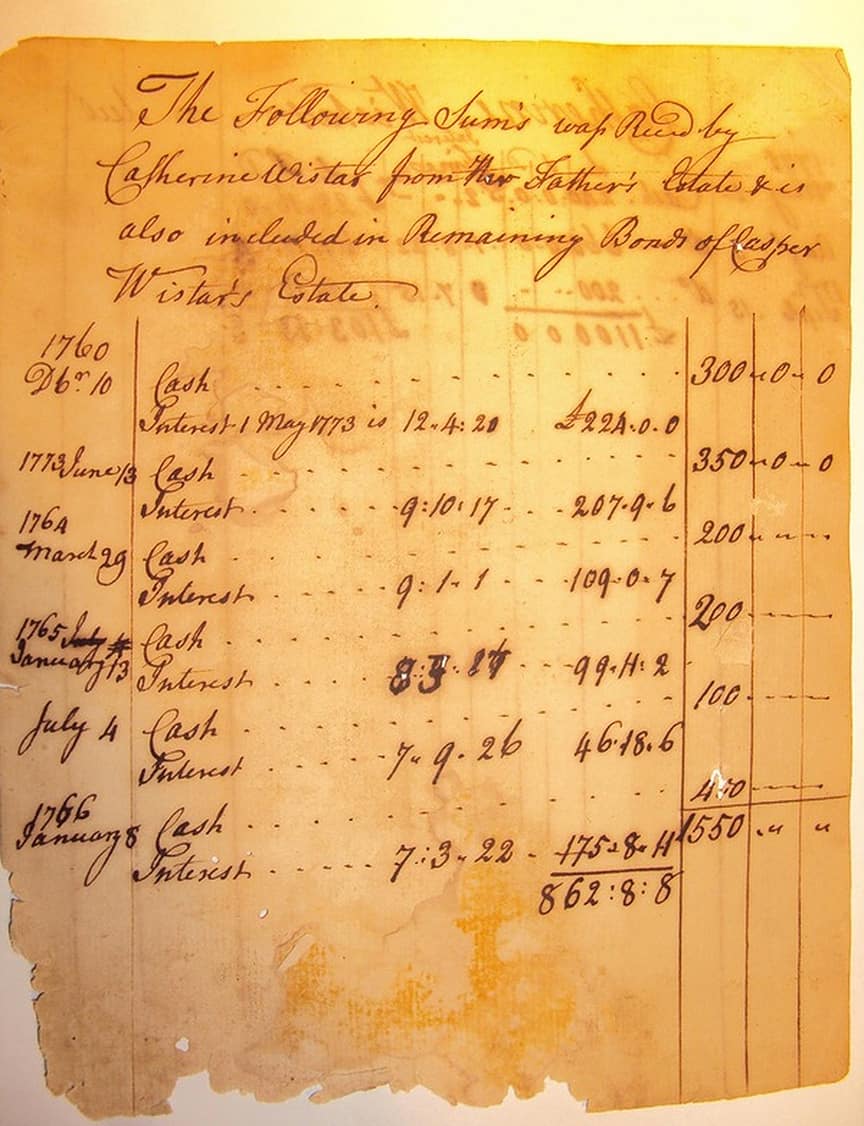
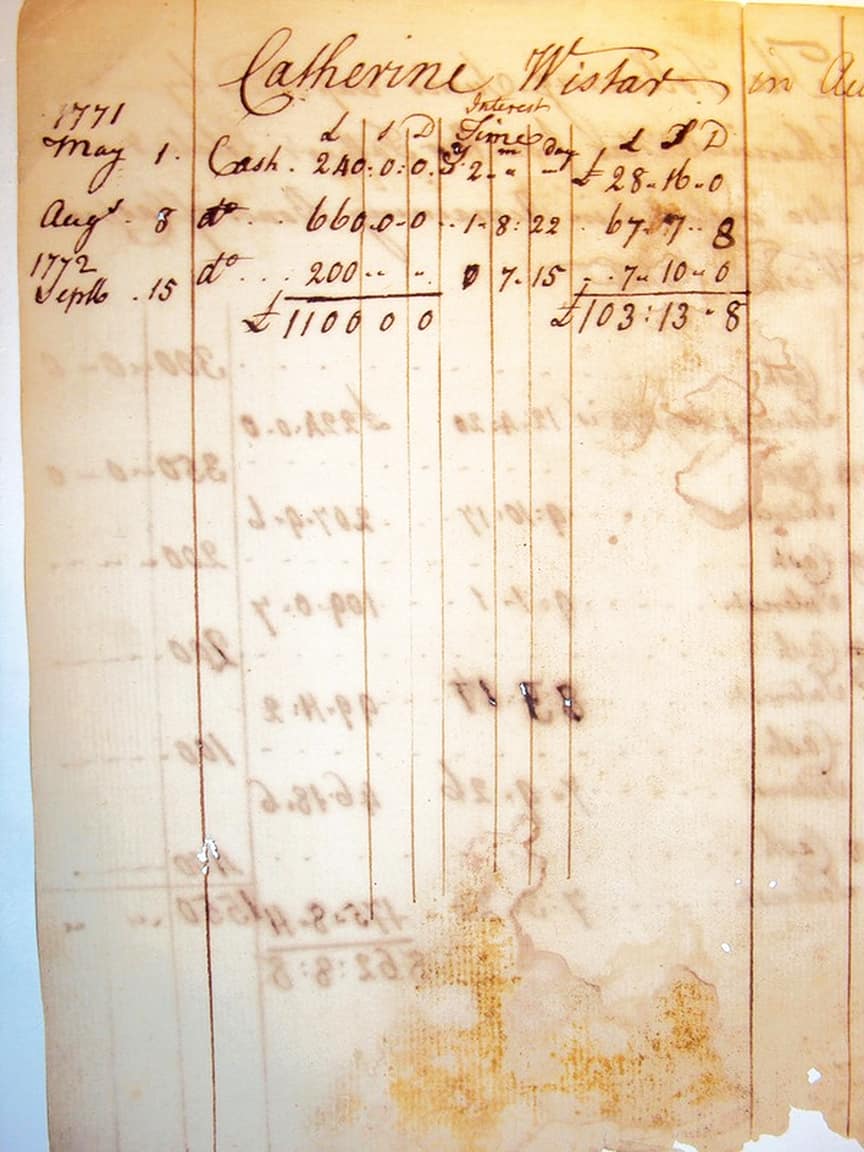
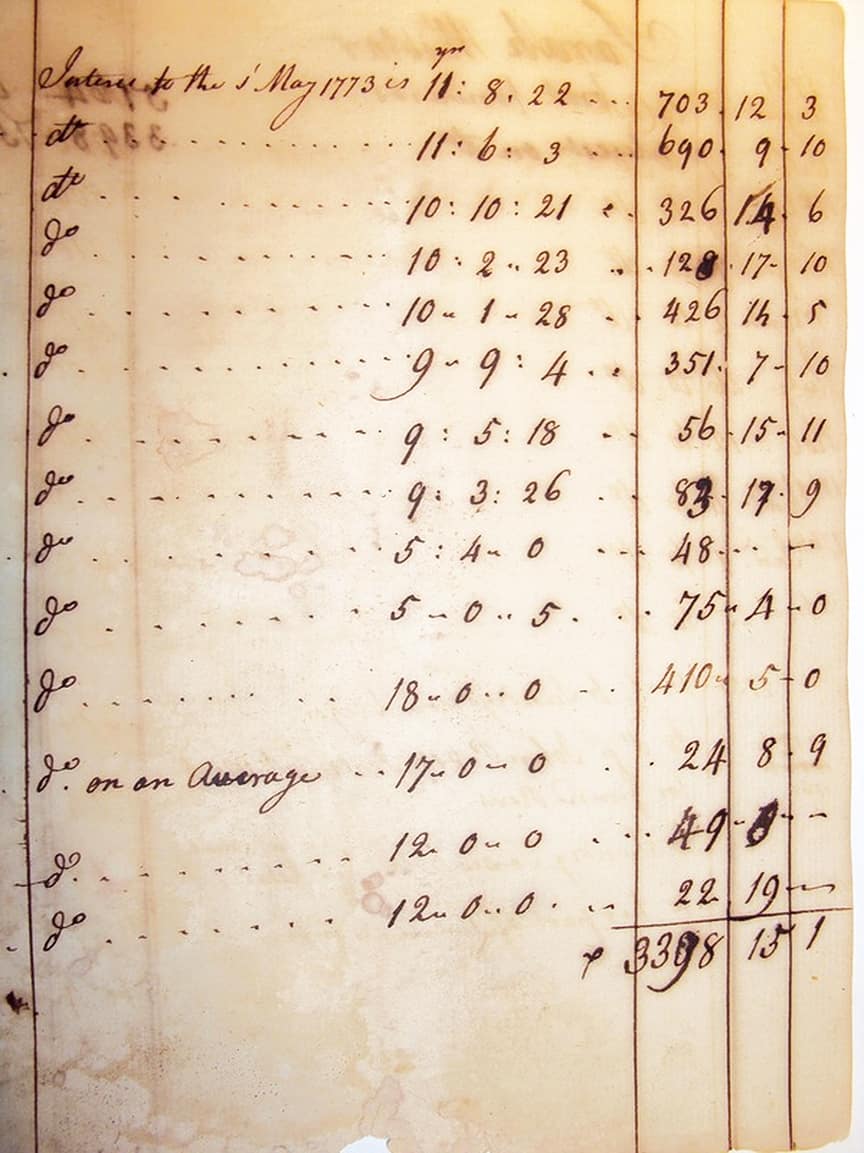
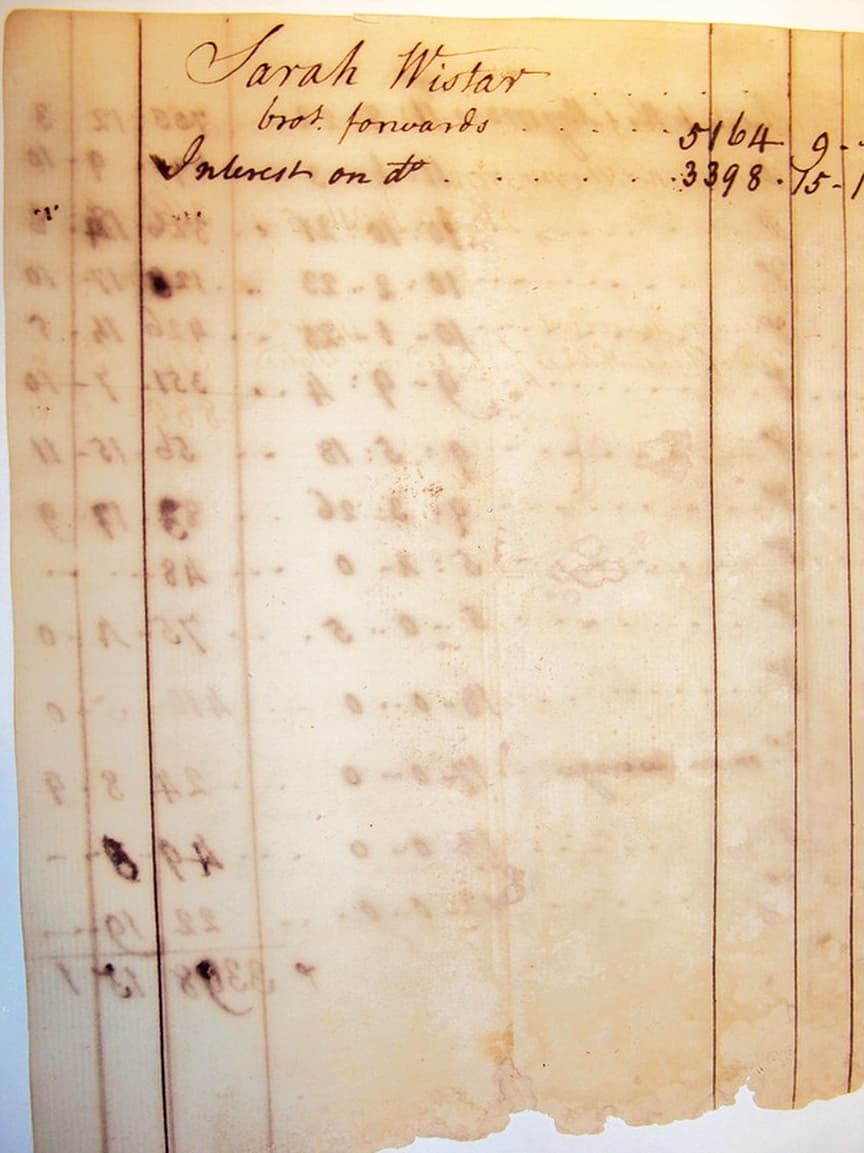
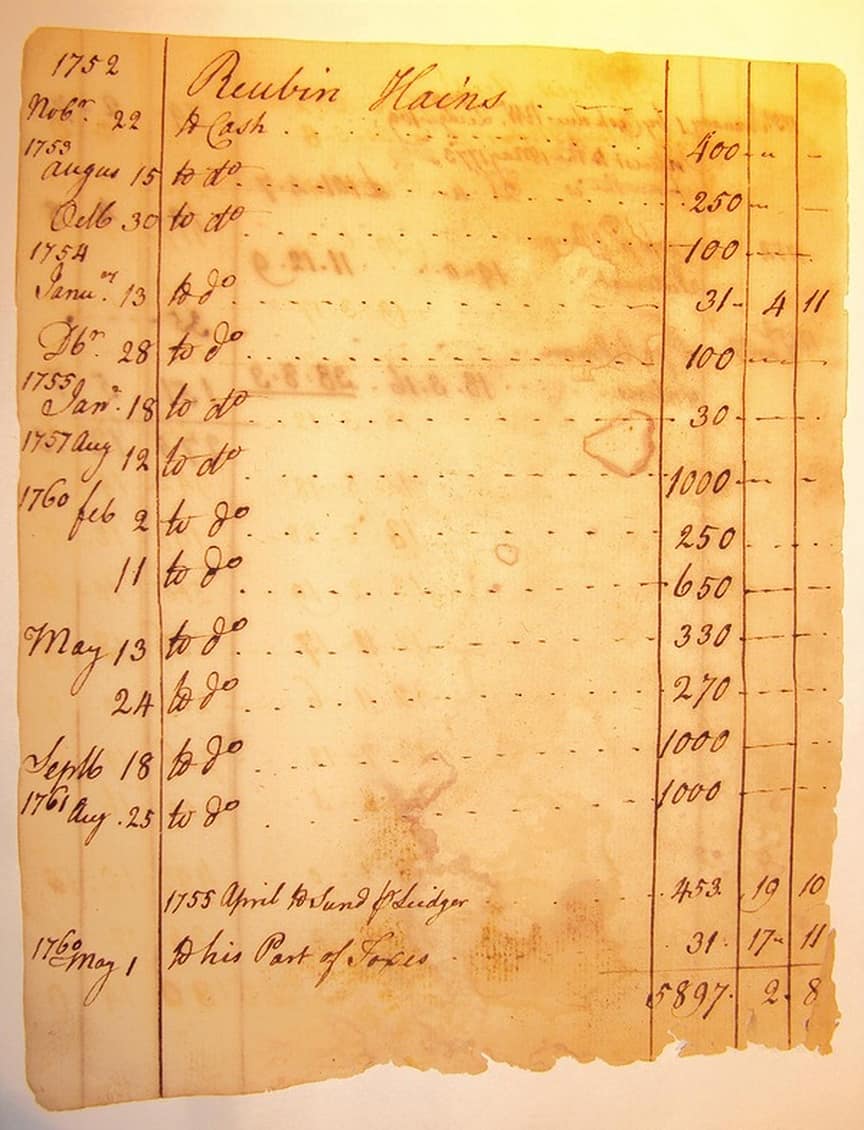
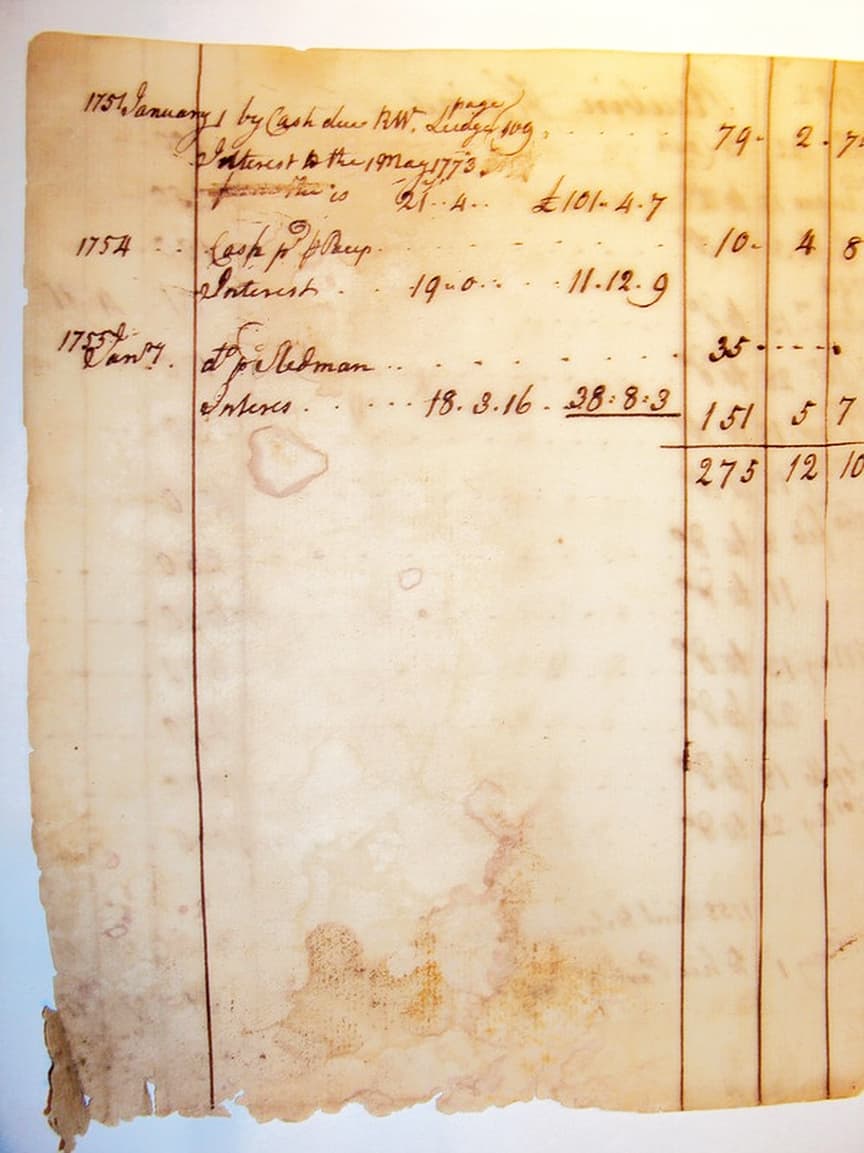
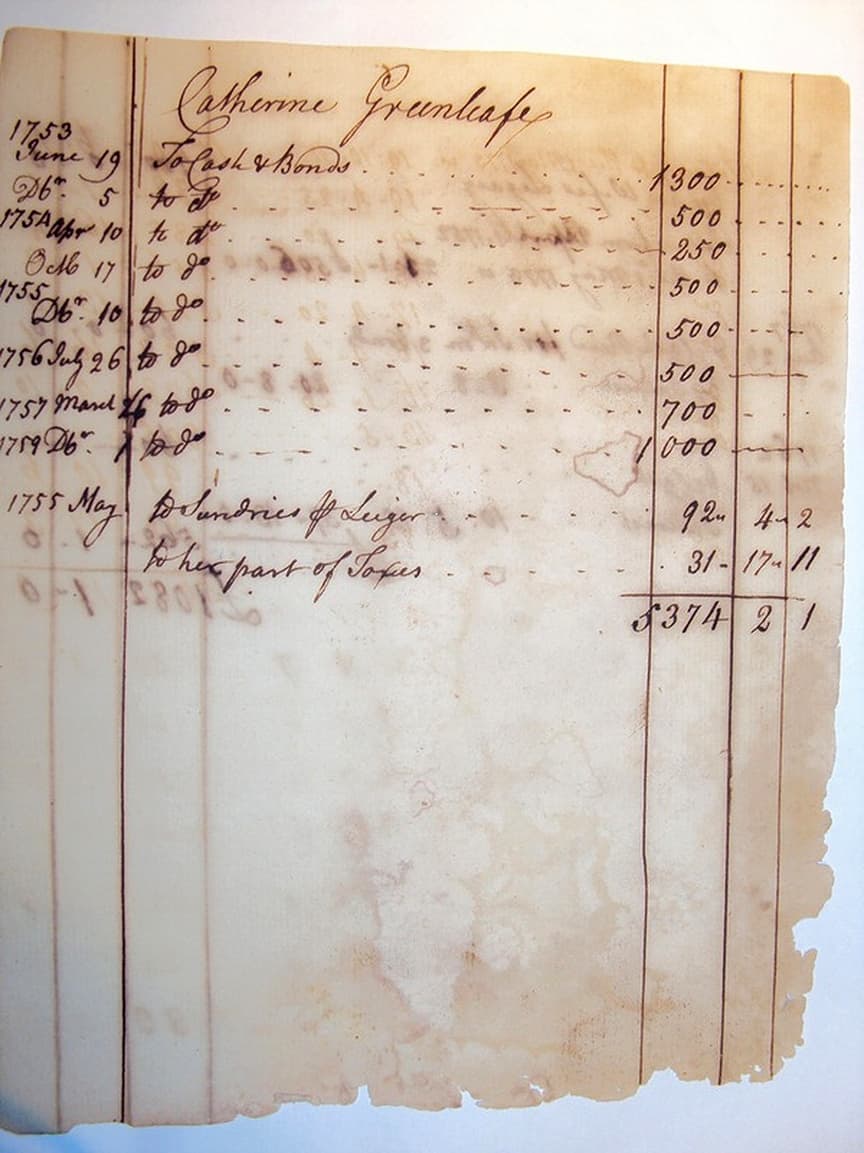
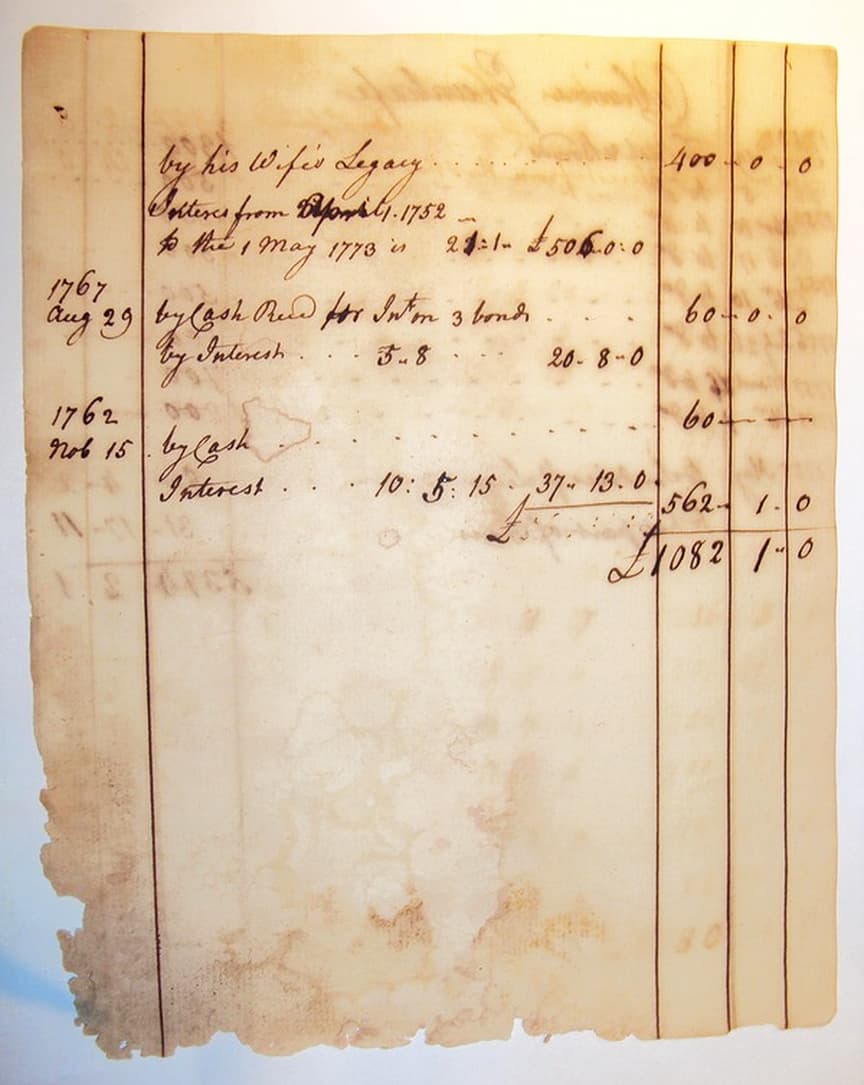
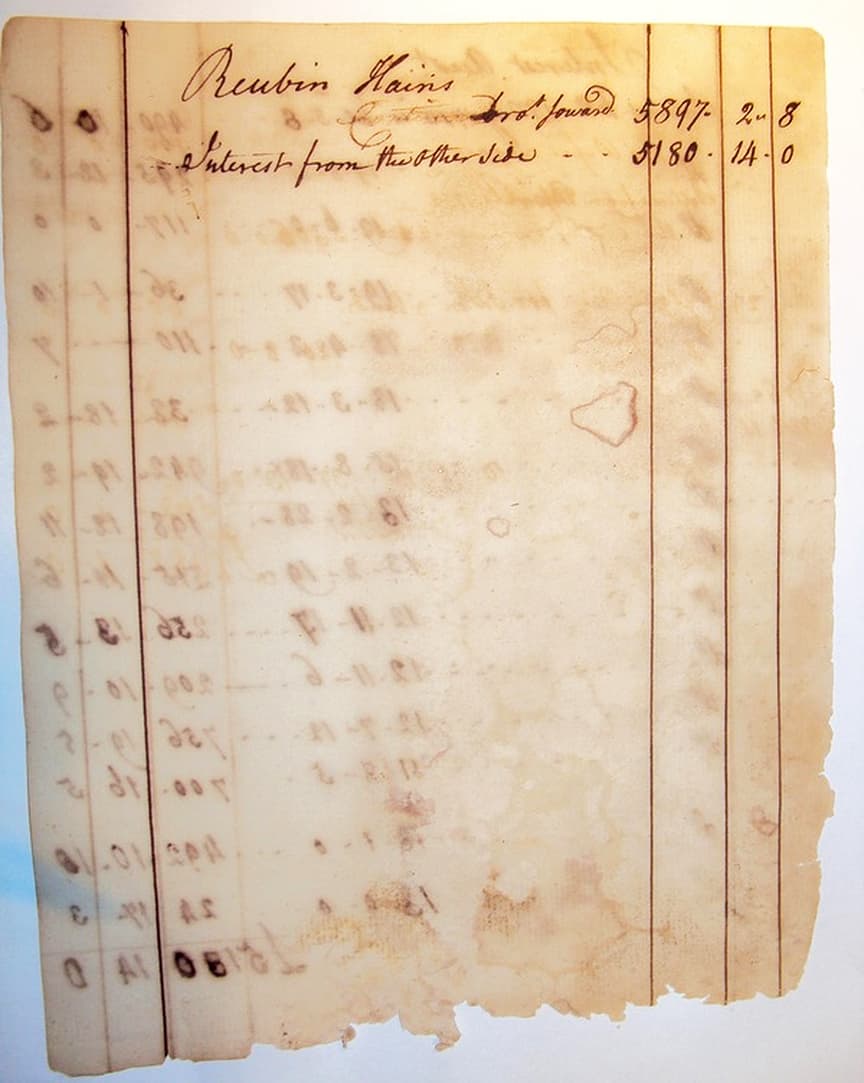
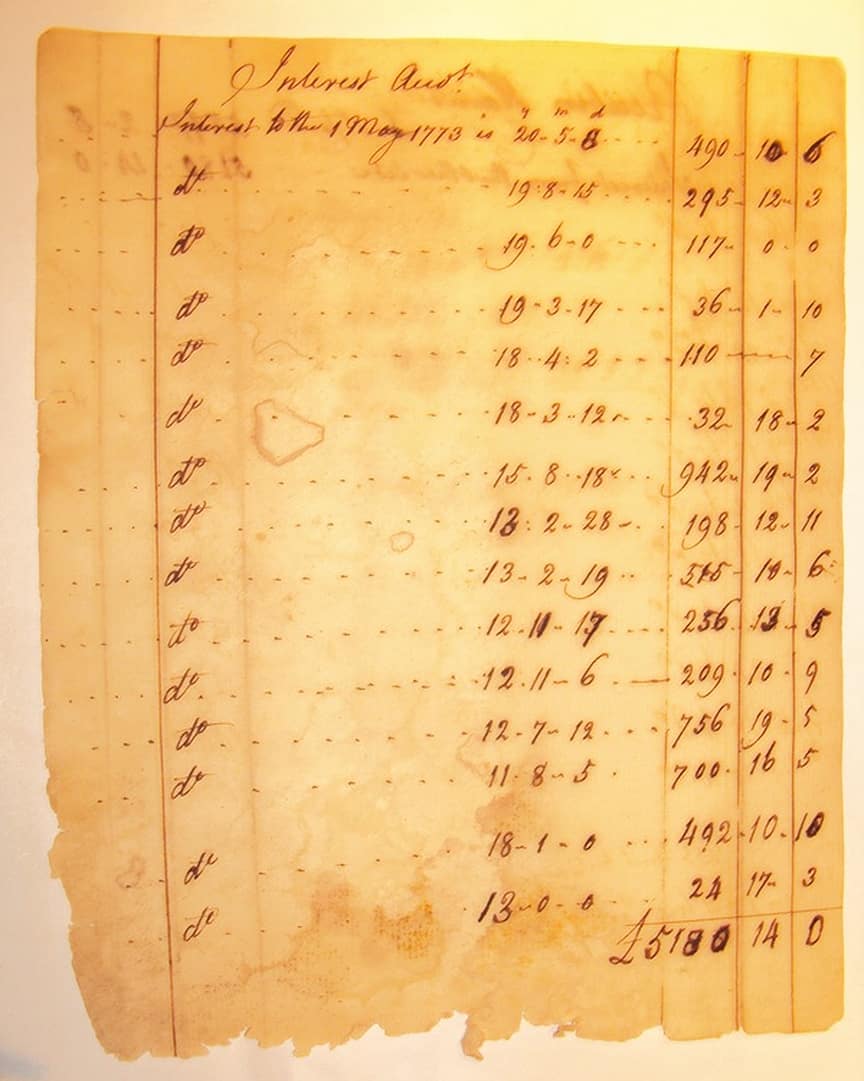
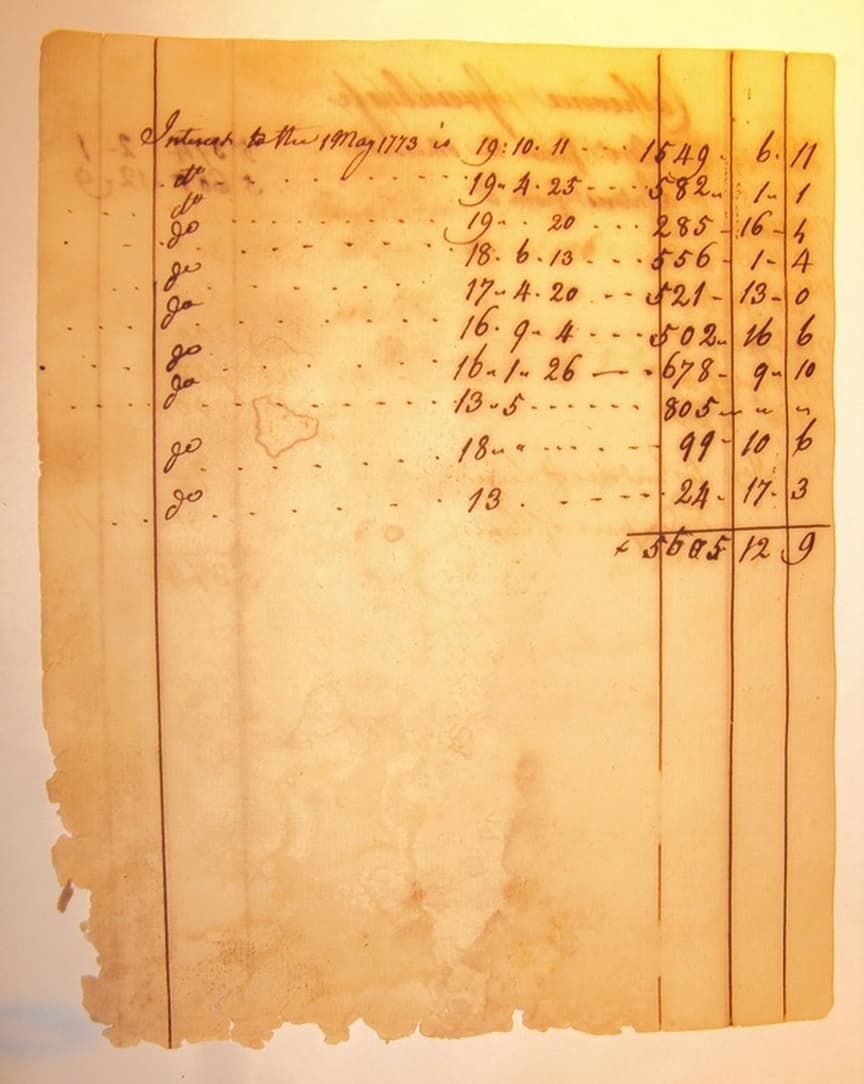
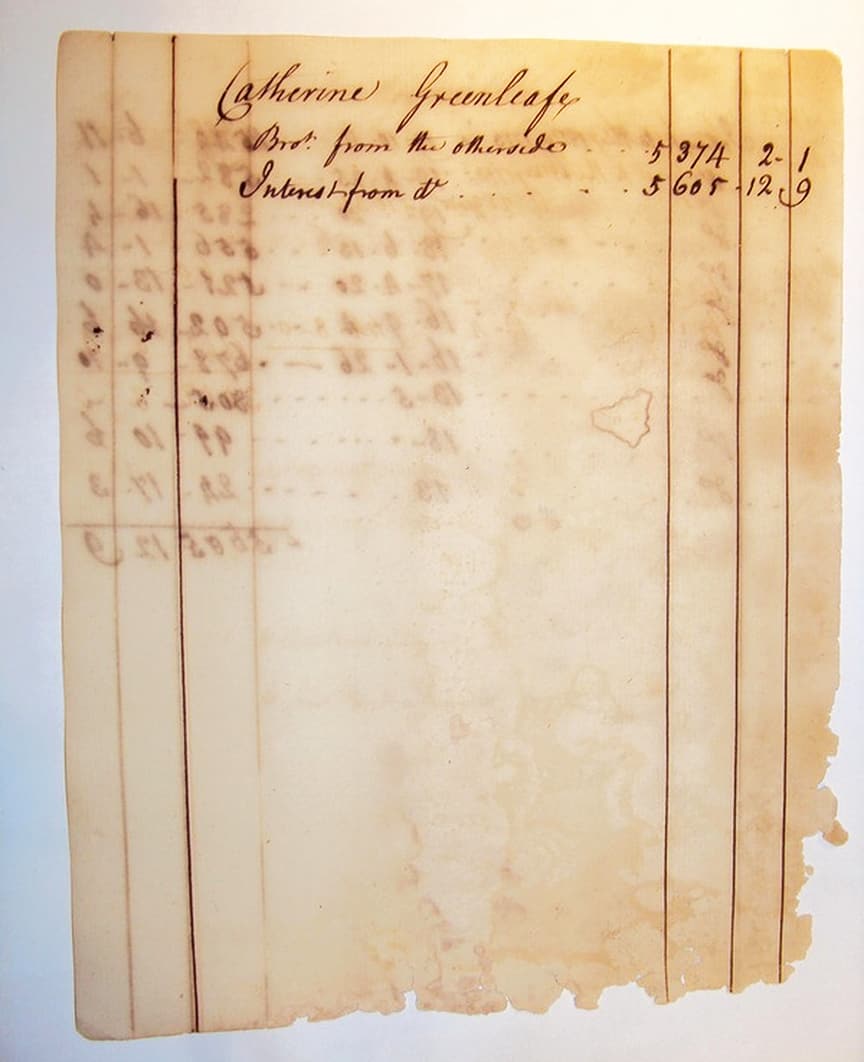
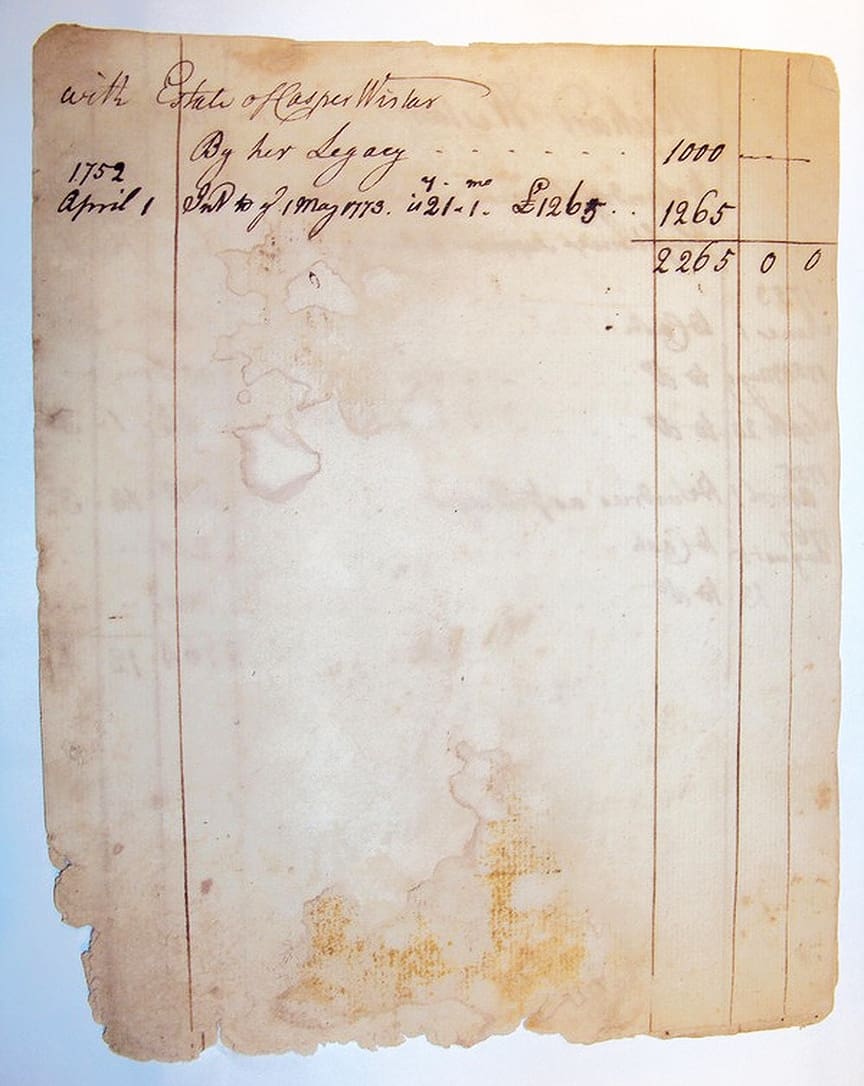
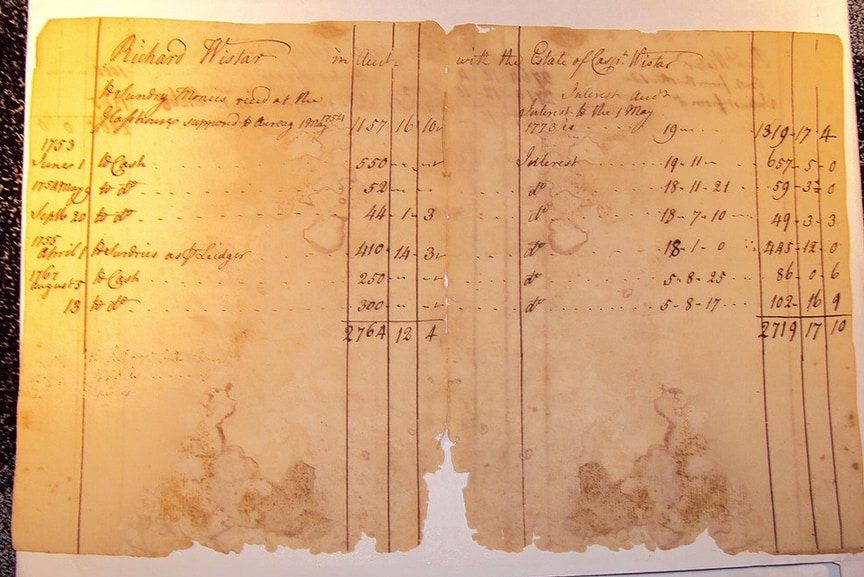
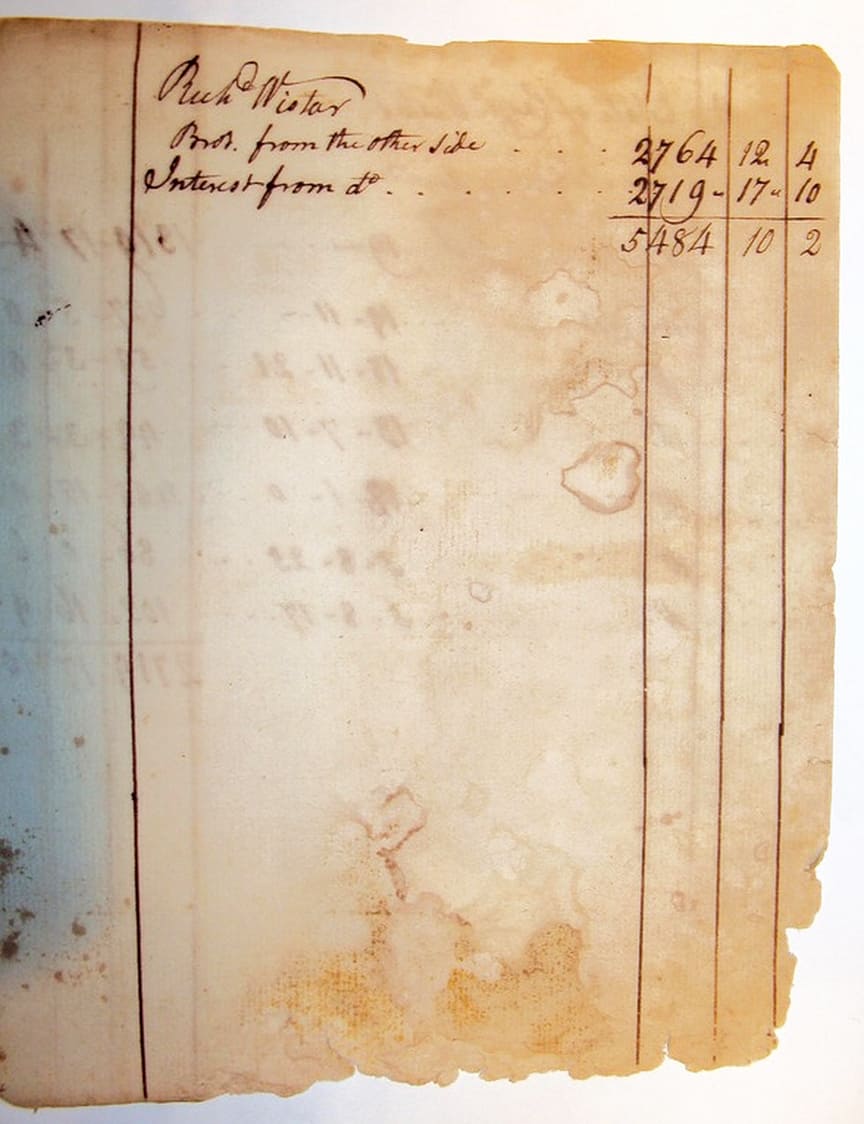
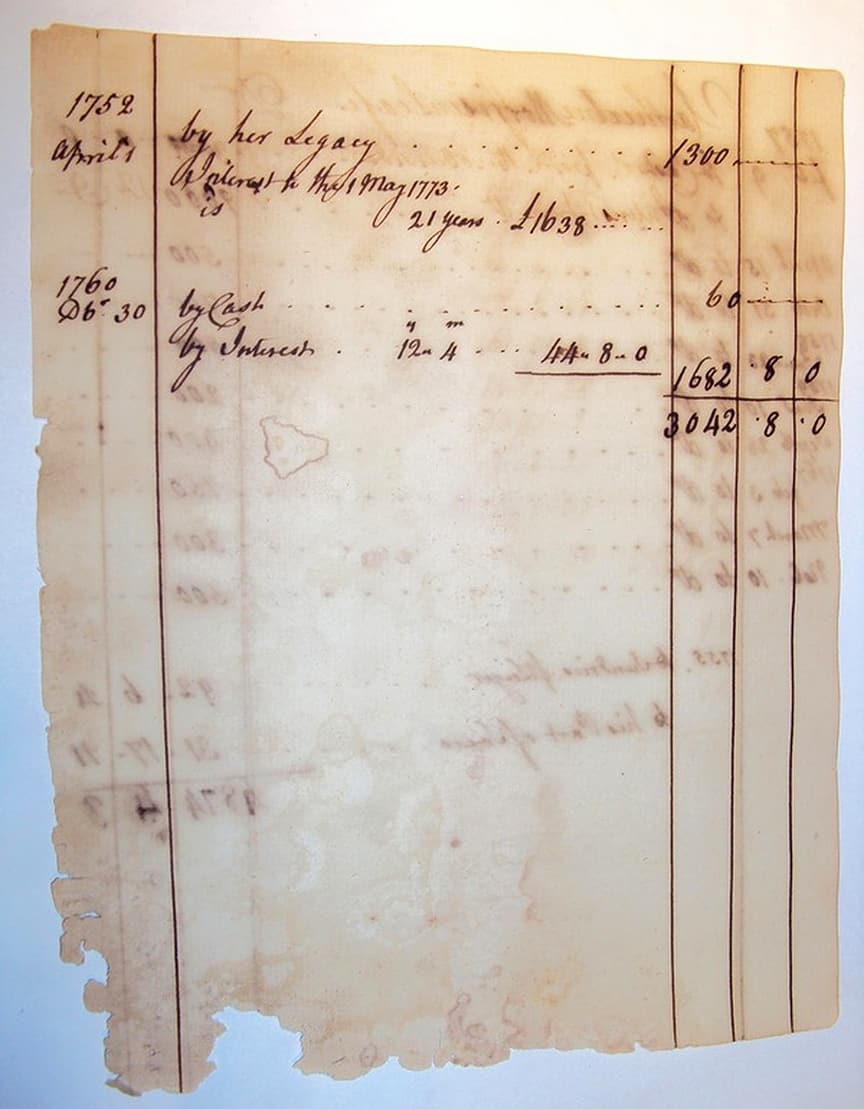
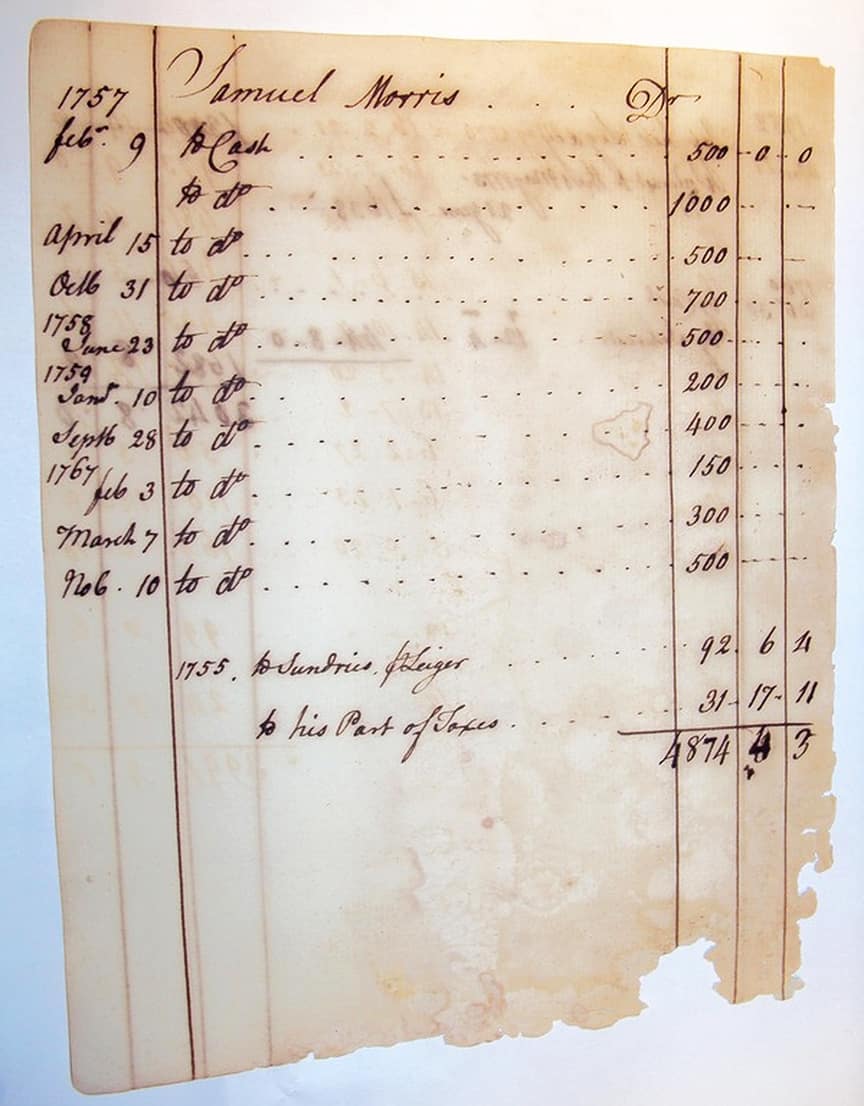
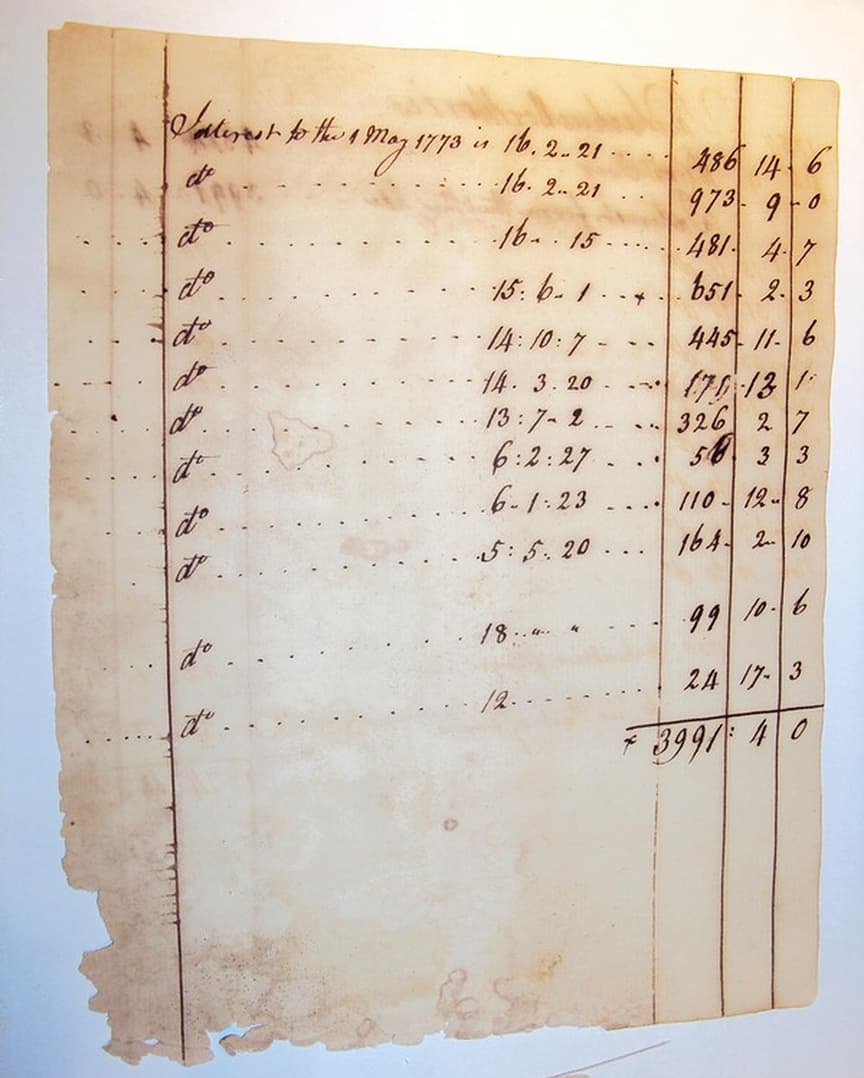
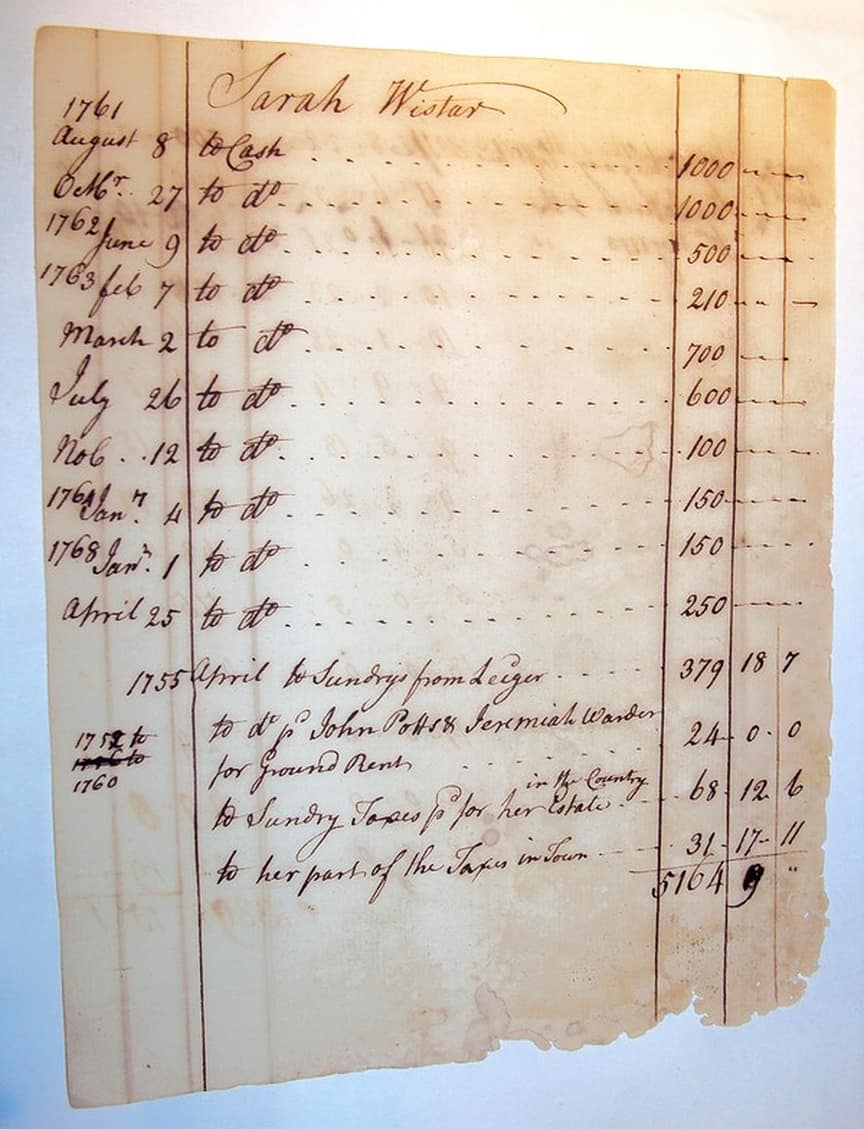
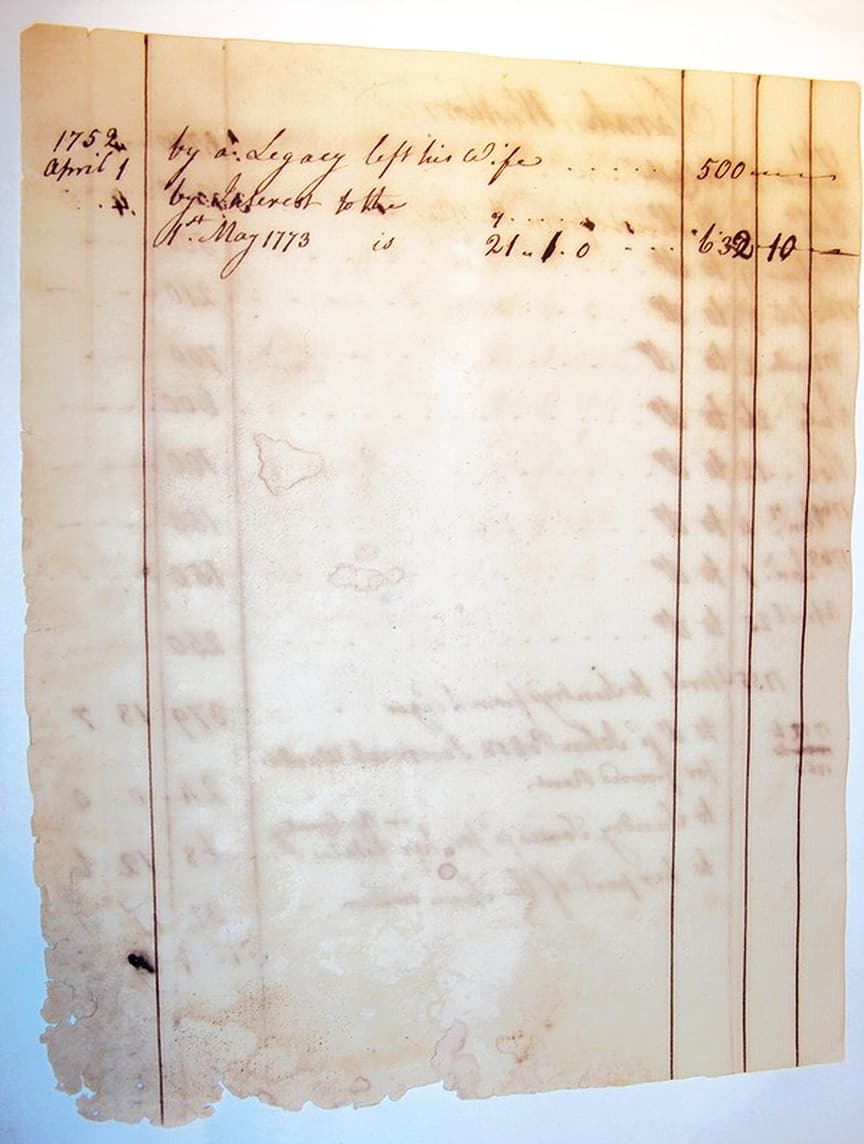 This is a 1738 land vellum in my personal collection (see below) which is in remarkable condition for an item that is 275 years old.
This is a 1738 land vellum in my personal collection (see below) which is in remarkable condition for an item that is 275 years old.
This land transaction between Caspar Wistar and Valentine Felty Herrgeroder was for 249 acres in Berks County, Pennsylvania. It was right after this large land transaction that Caspar began the construction of his Glass factory in Salem County, New Jersey.
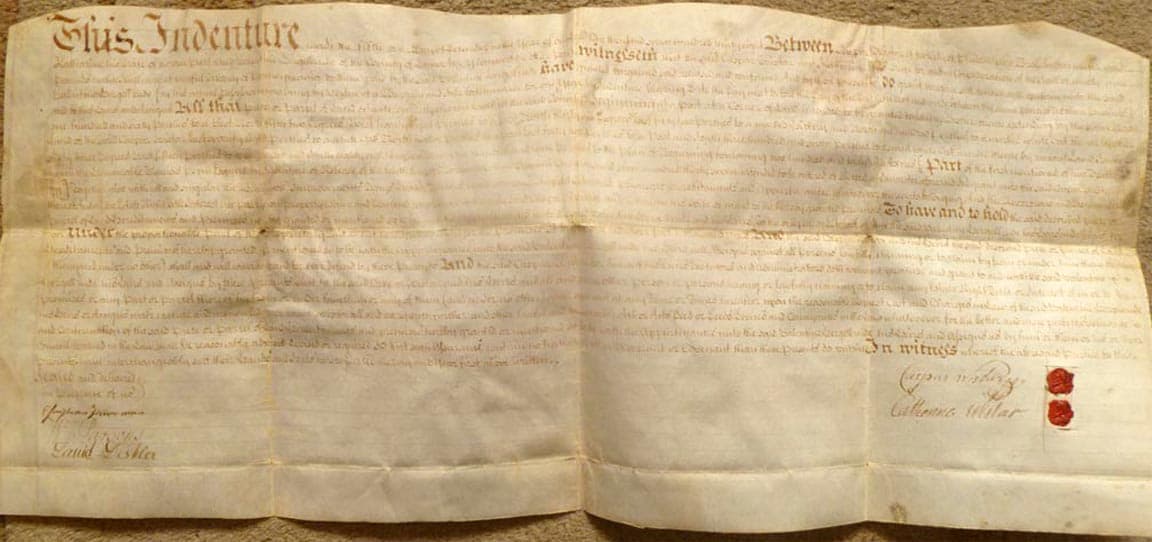
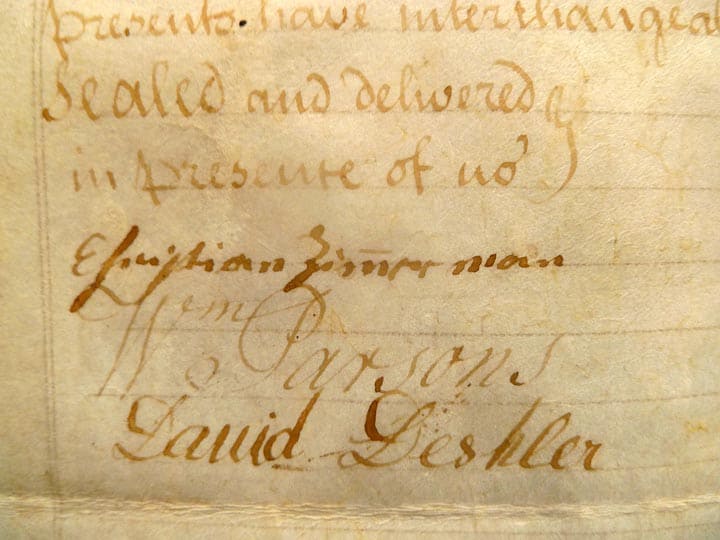
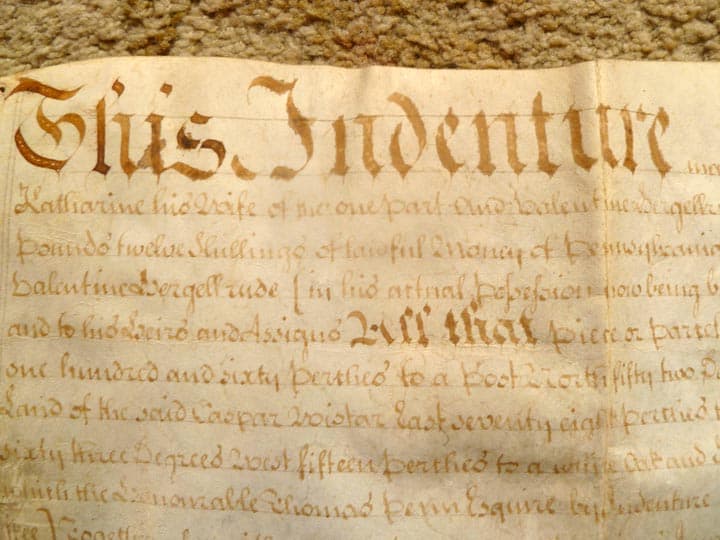
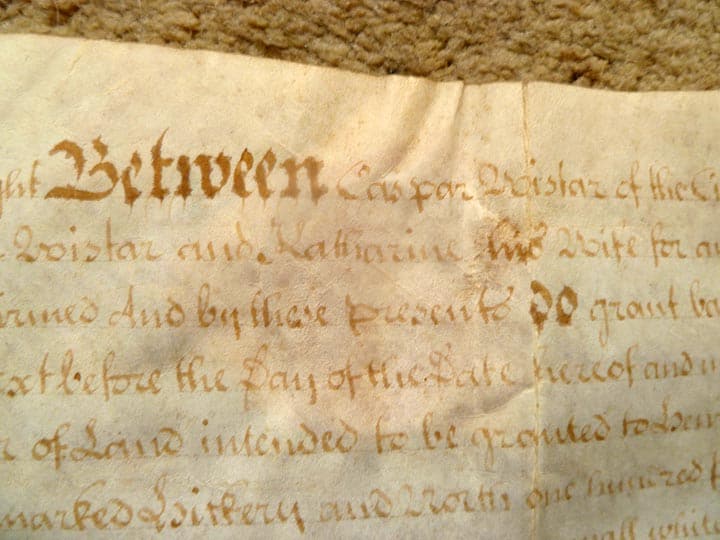
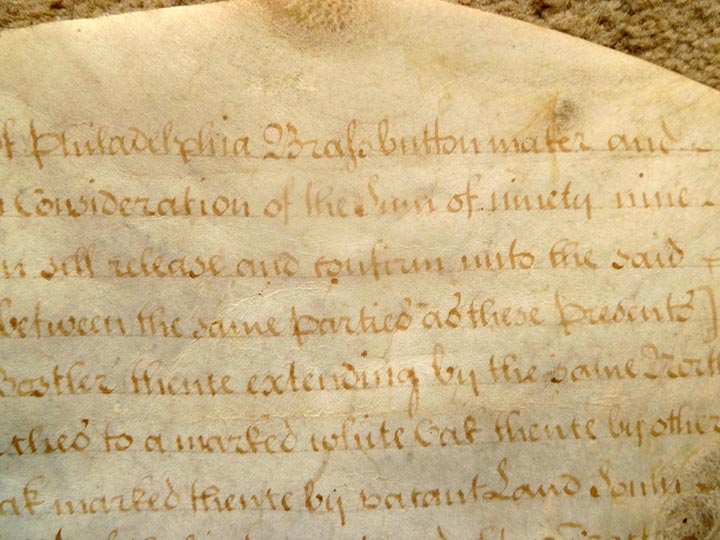 The signatures of Caspar and his wife Catherine below.
The signatures of Caspar and his wife Catherine below.
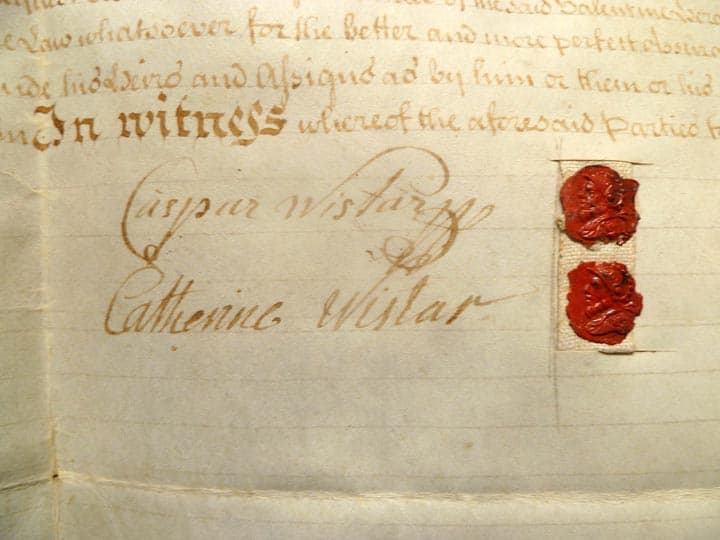 Caspar to Valentine Hergellruder 249 acres.
Caspar to Valentine Hergellruder 249 acres.
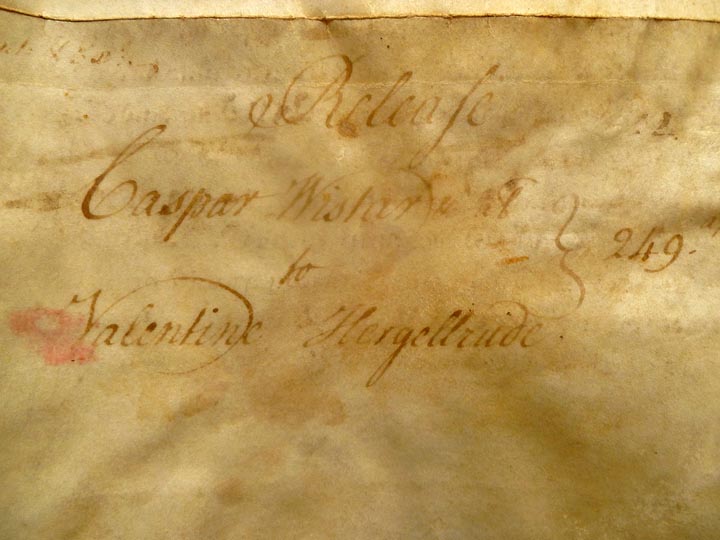 Below is the signature of Sheriff John Wright.
Below is the signature of Sheriff John Wright.
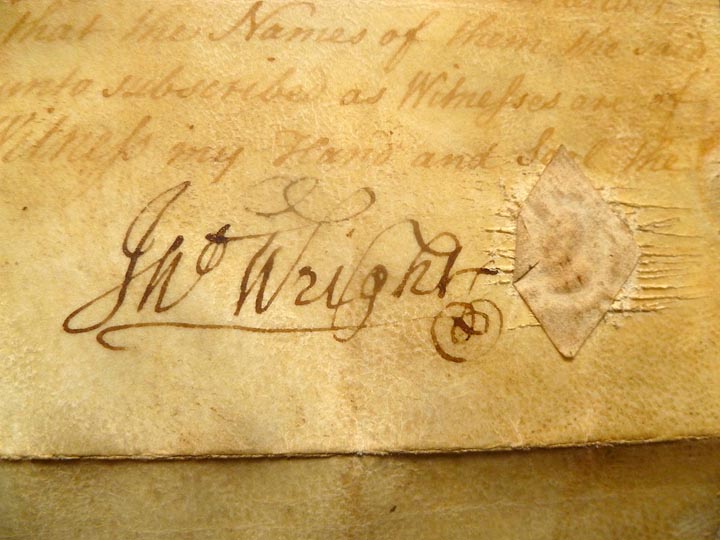
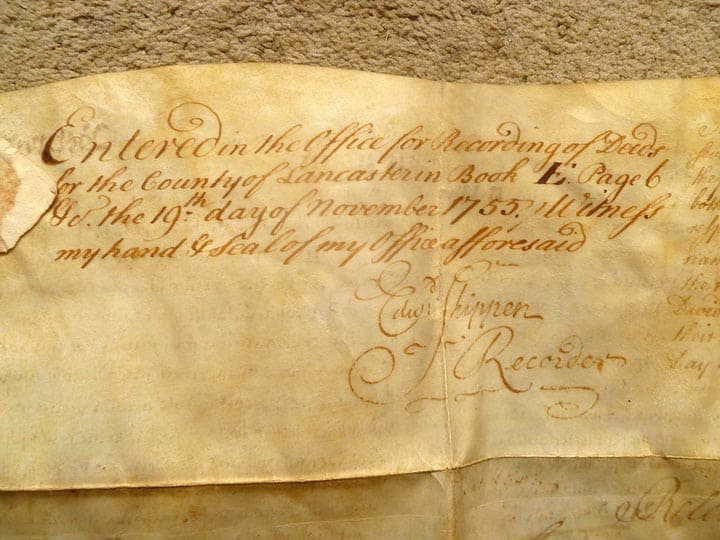
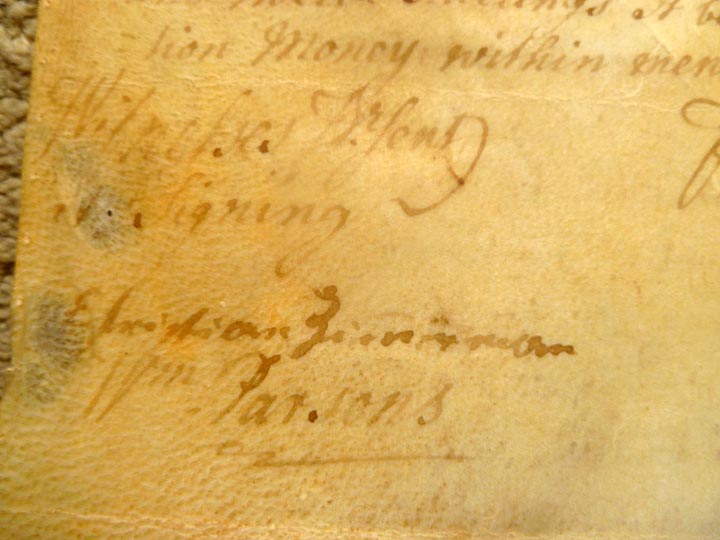
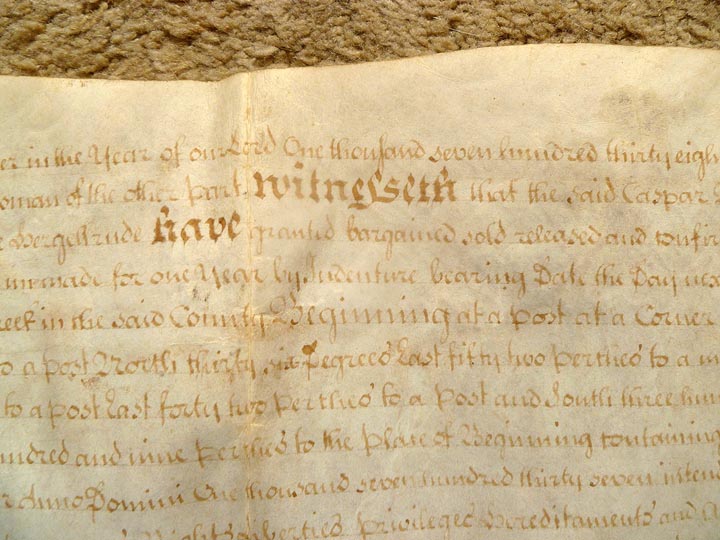
Some of the names that appear as witnesses are: David Deshler, a prominent Philadelphian, Christian Zimmerman, a twenty-one year old law student from Lancaster, Pennsylvania. He came from Germany at age 15 from the Palatinate region. Also as witnesses was Edward Shippen Jr., John Wright and William Parsons.
It was land deals such as this one that allowed Caspar to attain enough financial capitol to begin the construction of the Glass Factory at Alloway. Caspar was the largest land holder in the state of Pennsylvania next to the Penn family. His land ventures were in what is now the county’s of Berks, Lancaster and York in Pennsylvania. These ventures encouraged the mass amount of German refugees from the Palatinate region in Northern Germany. When the Glass Factory property was completely purchased, Caspar was then the largest single tract land holder in the colony of Western Jersey.

